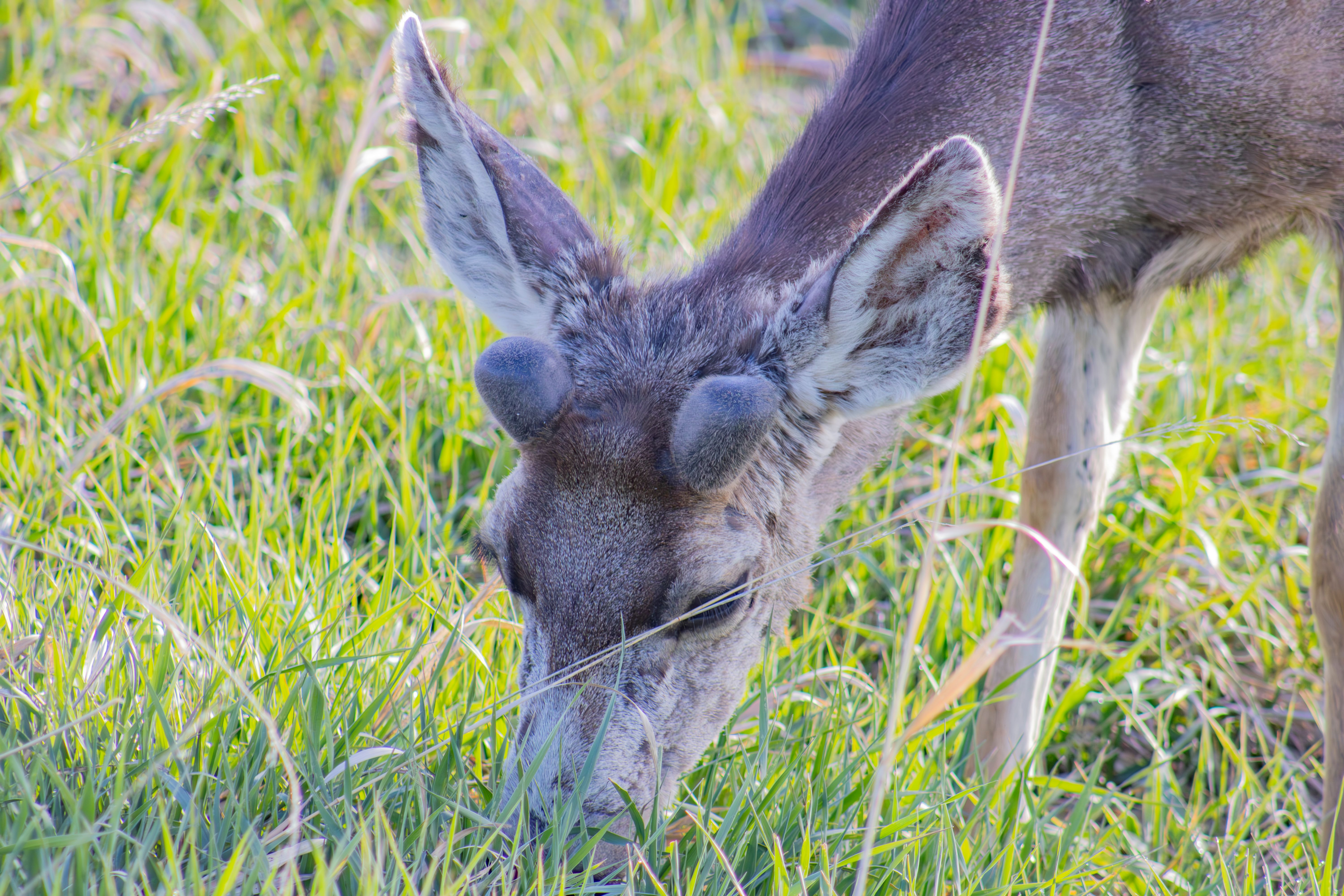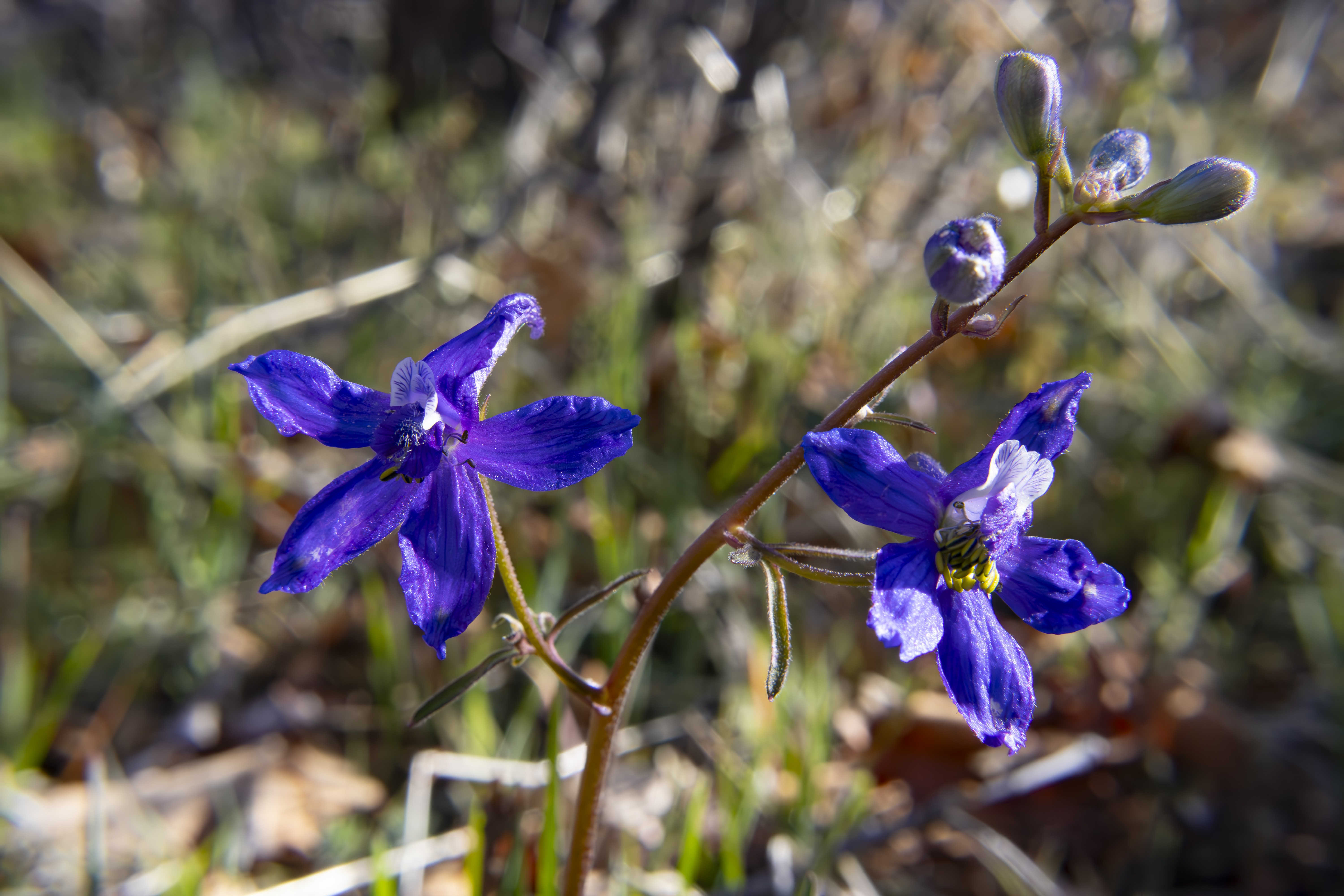The shrill songs of Spotted Towhees and Robins filled the still, morning air as I hiked up to the crest of the Lyons hogback in Ken Caryl Valley.
It was a warm, bright day. The red sandy trail leading up to the hogback was dry, flanked on either side by millions of blades of new, spring grass.
A little ways up the trail, a herd of Mule Deer browsed these fresh sprouts of grass. It had been months since they had a decent meal. They were skinny and scruffy, as they shed their grey winter coats in clumps revealing patches of short, red fur underneath. As I got closer, I realized all but one of the deer were does. The buck had a familiarly scarred face and clipped left ear. Two huge antler nubs were already growing from his forehead. I don’t think it was El Jefe, but he was still shaping up to be a huge buck like El Jefe.

The deer didn’t pay any attention to me as I silently stepped by them, occasionally stopping to take pictures of them. Even when I got within a few feet of them, they didn't care. The deer just kept on grazing. Clearly, they’d gotten used to me.
At the crest of the hogback, the birdsong was louder than ever. Most of the calls I heard came from numerous Spotted Towhees hidden in the budding Gambel oaks. But, I also picked out the songs of robins, scrub jays, blue jays, and thrushes. As I scanned the trees for birds to take pictures of, something else much closer to the ground caught my eye. The purple pedals of numerous Desert Larkspurs stuck out like sore thumbs against the orange-brown piles of last year’s leaves.
I carefully stepped off the trail and knelt down to get close-up pictures of some of the flowers using a macro-lens on my camera. Since I picked up my camera the first time three years ago, I’ve gotten much better at capturing close-ups of wildflowers and bugs. I opened up the aperture wide, turned up the ISO to 1600, and stood as still as I could as I took pictures of the flowers, in order to capture as much detail of them as possible.


